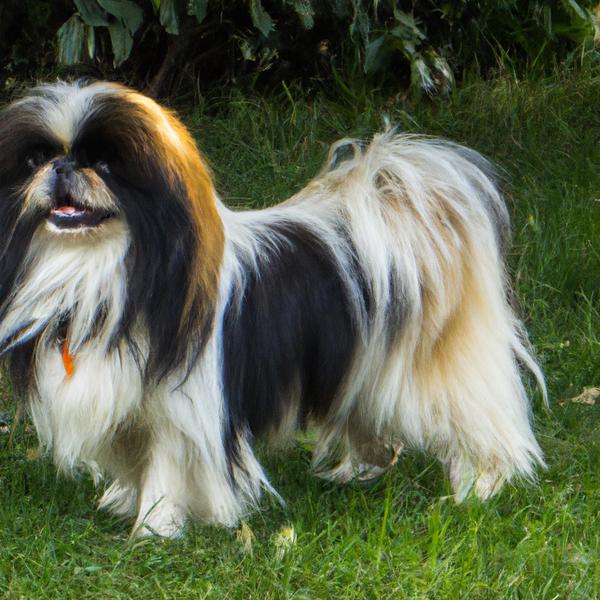Tibetan Chin vs. Bossi-Poo: Breed Differences and Similarities
Hypoallergenic
Are Tibetan Chins or Bossi-Poos hypoallergenic, or neither?
Unfortunately, neither Tibetan Chin nor Bossi-Poo are hypoallergenic, which may not make them the best choice for dog lovers who suffer from pet allergies.
Temperament
What are the personalities of Tibetan Chin and Bossi-Poo dogs?
Playful
Loving
Aloof
Independent
Happy
Alert
Intelligent
Loyal
Assertive
Willful
Active
Playful
Alert
Intelligent
Friendly
Affectionate
Lively
Gentle
Aggressive
Trainable
Faithful
Instinctual
Shedding Level
Do Tibetan Chins shed more than Bossi-Poos, or which breed sheds more, Tibetan Chins or Bossi-Poos?
Tibetan Chin or Bossi-Poo dogs are low shedders. The coat sheds an average amount and doesn't require much care.
Watchdog Ability
Which dog breed makes a better watchdog, the Tibetan Chin or Bossi-Poo?
Tibetan Chins aren't great guard dogs; they tend to just watch without taking action.
Bossi-Poos are decent watchdogs - they'll alert their owner if something seems amiss.
Ancestry
What are the origins of Tibetan Chin and Bossi-Poo breeds?
Tibetan Spaniel and Japanese Chin
Poodle and Boston Terrier
Breed recognition
Which kennel clubs recognize/register Tibetan Chin and Bossi-Poo?
ACHC = American Canine Hybrid Club
DRA = Dog Registry of America, Inc.
ACHC = American Canine Hybrid Club
DBR = Designer Breed Registry
DDKC = Designer Dogs Kennel Club
DRA = Dog Registry of America, Inc.
IDCR = International Designer Canine Registry
Date of Birth
When were Tibetan Chin and Bossi-Poo breeds first developed?
2000's
Unknown
Litter Size
What is the usual litter size for Tibetan Chin and Bossi-Poo?
A Tibetan Chin can have a litter of 3-6 puppies on average. However, it's worth noting that the size of the litters can vary greatly. Factors that can influence litter size include the health of the mother, breeding history, and genetics.
A Bossi-Poo can have a litter of 3-5 puppies on average. However, it's worth noting that the size of the litters can vary greatly. Factors that can influence litter size include the health of the mother, breeding history, and genetics.
Adaptability
Tibetan Chin and Bossi-Poos are known for their adaptability and versatility. They are capable of adapting well to a wide range of lifestyle changes and living environments, making them great companions for families and individuals of all lifestyles.
Health Issues
Between Tibetan Chin and Bossi-Poo, which breed is more prone to health problems?
Tibetan Chin and Bossi-Poo breeds are generally considered to be healthy. However, like all breeds, they are susceptible to certain health issues and it is important to keep an eye out for them and address them with your veterinarian as needed.
Major Concerns
What are the major health concerns for Tibetan Chin and Bossi-Poo breeds?
None Known
Addison's Disease
Mitral Valve Disease
Minor Concerns
What minor health issues should be kept in mind when owning Tibetan Chin and Bossi-Poo?
Entropion
Cataracts
Progressive Retinal Atrophy (PRA)
Cataracts
Cushing's Disease
Occasional Tests
What occasional tests are recommended for Tibetan Chin and Bossi-Poo breeds?
Dna For Pra
Eye Examinations
Full Physical Examination
Eye
Blood
Heart
Eye Examination
Physical Examination
Energy
How do the energy levels of Tibetan Chins and Bossi-Poos compare?
Tibetan Chins' high energy levels make them unsuitable for a low-key dog, choose accordingly.
Bossi-Poos are suitable for those with a balanced lifestyle as they have an average energy level.
Social Needs
Tibetan Chin vs Bossi-Poo social needs comparison
Tibetan Chin and Bossi-Poo have very high social needs. These needs include regular mental and physical stimulation, a job or purpose, and companionship. They thrive in environments where they have a lot of interaction with humans and other dogs.
Exercise Needed
Tibetan Chin vs Bossi-Poo exercise need comparison.
The Tibetan Chin and Bossi-Poo breeds are breeds that require minimal physical activity to maintain a healthy lifestyle. They are ideal for people with busy lifestyles, elderly people or those who have limited mobility. They also make great pets for those who live in small apartments or have limited outdoor space.
Sleeping Need
Which of the two sleeps the most/least: Tibetan Chin or Bossi-Poo?
Tibetan Chins are known for their relaxed and calm nature and enjoy long periods of sleep.
Bossi-Poos sleep less than other breeds but still need adequate sleep for good health.
Tendency to Bark
Do Tibetan Chins or Bossi-Poos bark more/less frequently?
Tibetan Chins bark moderately when necessary and may also bark due to certain triggers like fear, alarm, boredom, greeting, separation anxiety and compulsive barking.
Bossi-Poo dogs are generally less vocal than other breeds and only bark when necessary, such as to alert their owner or communicate.
Mouthiness
Mouthiness Comparison: Tibetan Chin vs Bossi-Poo?
Roaming urge
Tibetan Chin vs Labrador: Running away tendency?
Prey Drive
Tibetan Chin or Bossi-Poo - which breed has a higher level of prey drive?
Tolerance of being left alone
Grooming
Which breed is easier to maintain in terms of grooming, Tibetan Chins or Bossi-Poos?
Tibetan Chin and Bossi-Poo are breeds of dogs that require an average amount of grooming effort.
Intelligence
Comparing Intelligence: Tibetan Chins vs Bossi-Poos
Tibetan Chins are average in obedience intelligence but have a high IQ and may cause trouble if left unsupervised.
Bossi-Poo is a very intelligent and trainable breed.
Sensitivity Level
How do Tibetan Chin and Bossi-Poo compare in sensitivity?
This breed is sensitive and requires gentle handling and a calm home environment.
This breed is sensitive to its environment and best suited for patient and understanding families with a consistent routine.
Affection Dependance
Which is the more affectionate dog breed: Tibetan Chin vs Bossi-Poo?
Apartment Friendly
Which breed is more apartment-friendly: Tibetan Chin or Bossi-Poo?
Tibetan Chins and Bossi-Poos are known for being excellent apartment dogs. They are fairly active indoors and will do okay without a yard.
Child Friendly
Do Tibetan Chins or Bossi-Poos have a friendlier temperament towards children?
Tibetan Chins have an average level of friendliness towards children.
Bossi-Poos make excellent family pets for kids due to their gentle, protective nature and calm temperament.
Senior-friendly
Which dog is more suitable as a pet for the elderly - Tibetan Chin or Bossi-Poo?
Cat Friendly
Do Tibetan Chin or Bossi-Poo breeds have a better compatibility with cats?
Tibetan Chins and Bossi-Poos are very cat friendly dogs. They generally make good companions for cats.
Dog Friendly
Which breed is more sociable with other dogs: Tibetan Chin or Bossi-Poo?
Tibetan Chins are friendly and active companions, and can be good family pets, though their friendliness towards other dogs may vary.
Bossi-Poos are generally very friendly towards other dogs, with a happy and affectionate temperament.
Pet friendly
How do Tibetan Chin or Bossi-Poo dogs interact with other pets?
Stranger Friendly
Which breed is more friendly with strangers: Tibetan Chin or Bossi-Poo?
Tibetan Chin and Bossi-Poo are friendly dogs and typically won't bark at strangers. However, if you wish to change this behavior, training them is easy thanks to their intelligence, making it pretty simple to teach them anything.
Playfulness
Which breed is more playful between Tibetan Chin and Bossi-Poo?
Tibetan Chins have an average level of playfulness, enjoying playtime like most dogs but not excessively so.
Bossi-Poos are a playful breed that needs daily playtime to be happy.
Trainability
How do the trainability levels of Tibetan Chins and Bossi-Poos compare?
Tibetan Chin and Bossi-Poo dogs are known for their ease of training and ability to learn quickly, making them a popular choice for pet owners and trainers alike.
Compare Tibetan Chin with other breeds
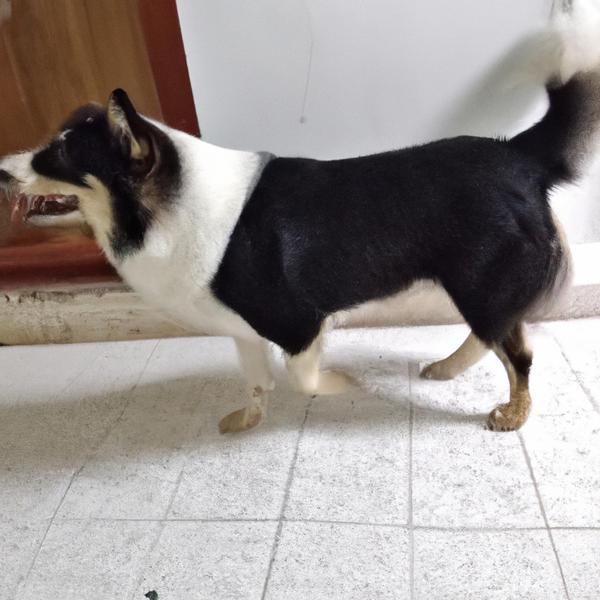
Rashon
Tibetan Chin vs Rashon
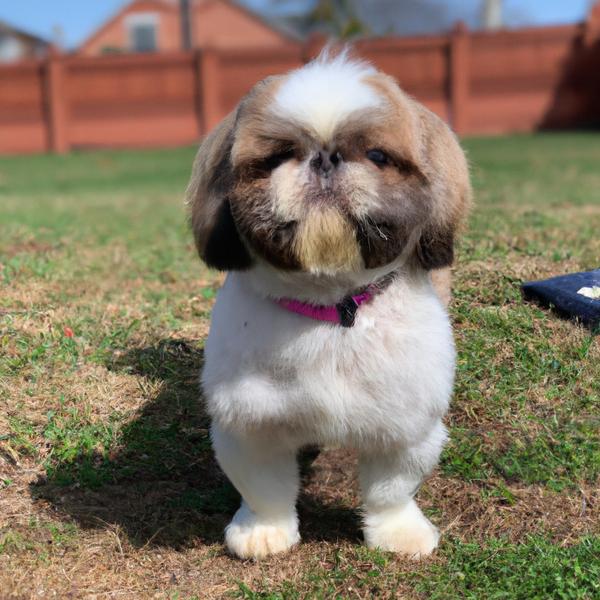
Smooth Fo-Tzu
Tibetan Chin vs Smooth Fo-Tzu
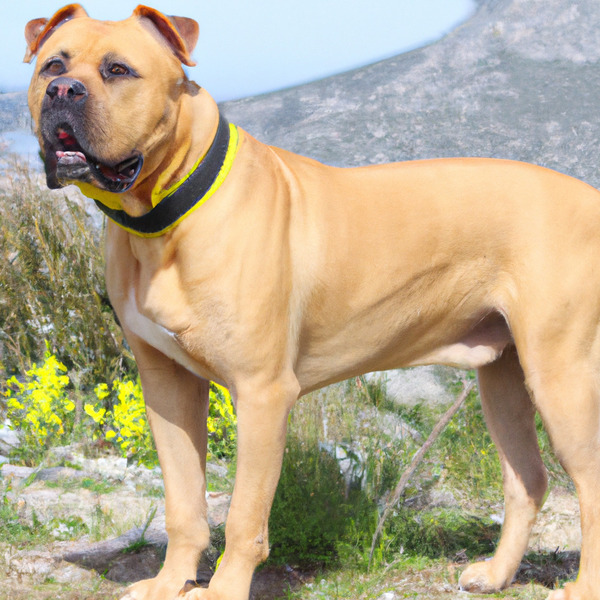
Perro De Presa Canario
Tibetan Chin vs Perro De Presa Canario
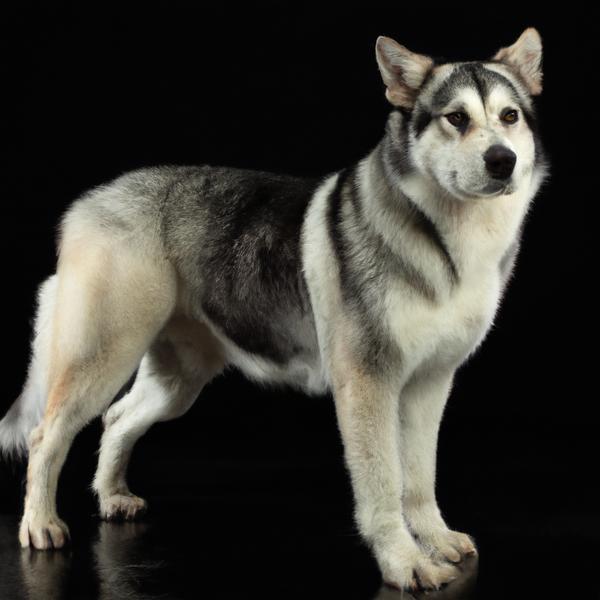
Norjack
Tibetan Chin vs Norjack

Brottweiler
Tibetan Chin vs Brottweiler
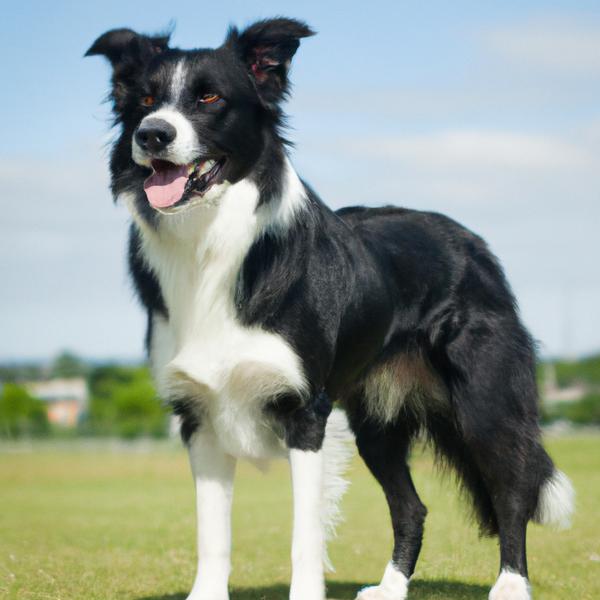
Border Schnollie
Tibetan Chin vs Border Schnollie
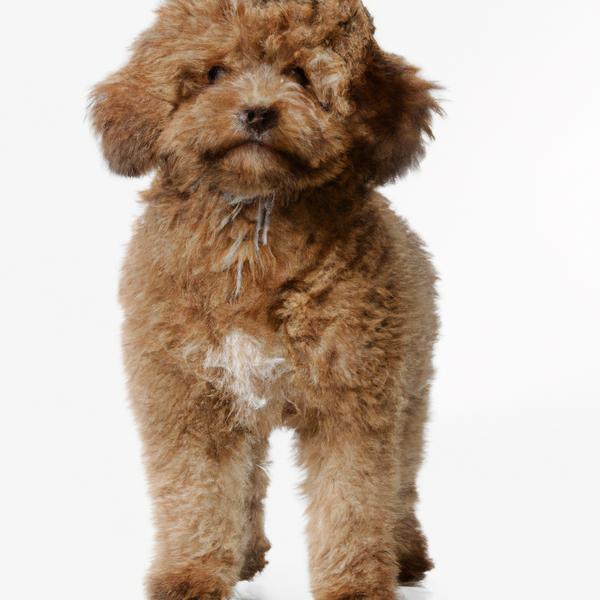
Bossi-Poo
Tibetan Chin vs Bossi-Poo
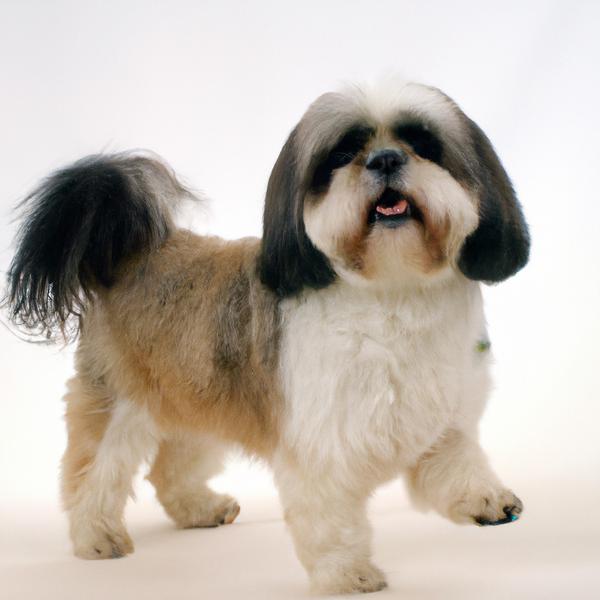
Lhasa Apso
Tibetan Chin vs Lhasa Apso
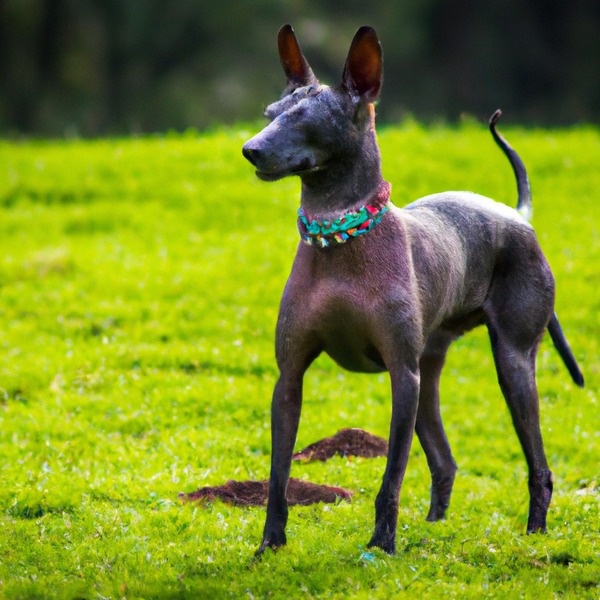
Xoloitzcuintle
Tibetan Chin vs Xoloitzcuintle
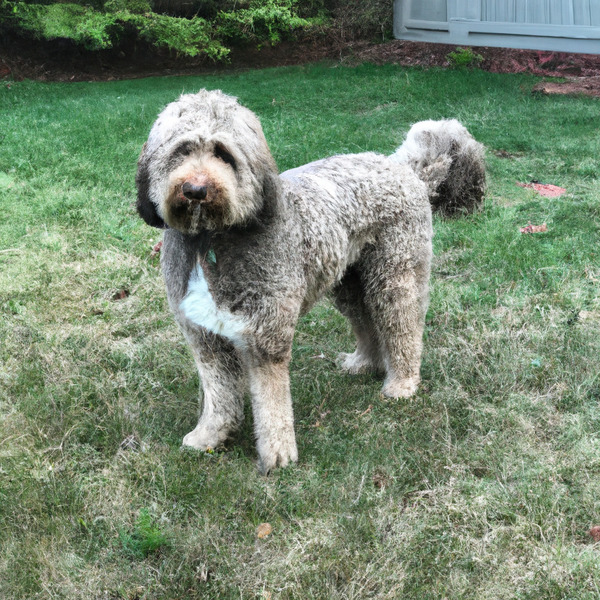
Whoodle
Tibetan Chin vs Whoodle
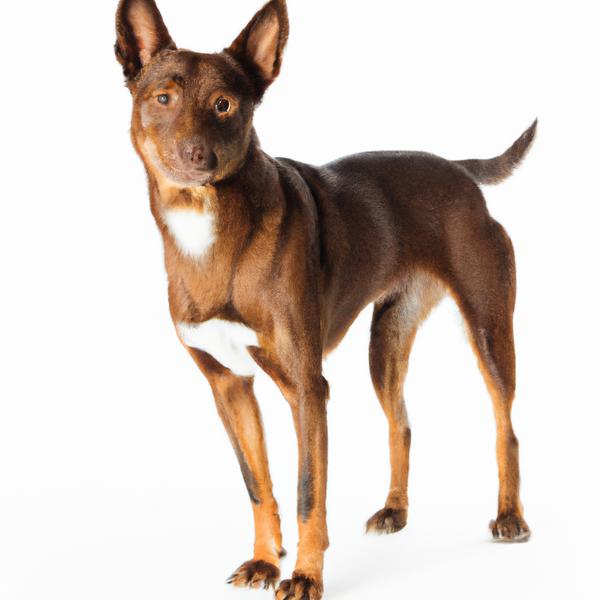
Peka-A-West
Tibetan Chin vs Peka-A-West
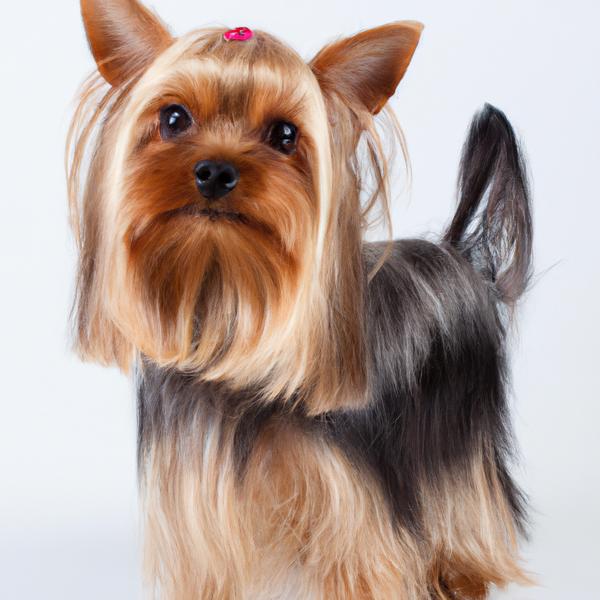
Yorwich
Tibetan Chin vs Yorwich
